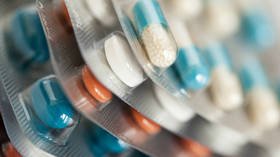Scientists develop BREAKTHROUGH device that could end over-prescription of antibiotics

US scientists have developed a device to reduce the detection time of bacteria from days to just minutes. The scientific breakthrough could spell the end of over-prescribing antibiotics while patients await results.
The team of biomedical engineers at Penn State University published the news of their creation in the Proceedings of the National Academy of Sciences on Monday.
The device uses microtechnology to trap single bacteria cells that can then be viewed under an electron microscope, allowing doctors to determine whether bacteria is present in just 30 minutes before prescribing a suitable antidote.
Also on rt.com Frozen doom? Antibiotic-resistant superbug genes found in the ArcticThis approach is a radical improvement on the current lab wait time of three to five days for results. Professor Pak Kin Wong, who co-developed the device, said it could stop physicians from prescribing broad-spectrum antibiotics rather than targeting specific micro-organisms.
“We currently prescribe antibiotics even when there is no bacteria present,” Wong said to AFP.
“That is over-prescription. That is one of things we tried to express. Can we quickly determine the existence of bacterial infection?”
The breakthrough could mean wonders for the treatment of patients, as the sample can also be exposed to antibiotics to determine if the bacteria is susceptible to particular medicines or not. Urinary tract infections are the most common bacterial infections, said Wong, yet more than 75 percent of specimens sent to the lab are negative.
“Rapidly ruling out or confirming the presence of bacteria at a clinically relevant concentration will dramatically enhance patient care,” he added.
READ MORE: Key antidepressant ingredient contributing to antibiotic-resistant superbug
Results showed the system is 100 percent sensitive to the presence of bacteria, and will classify bacteria about 83 percent of the time. It also achieved a 100 percent success rate in identifying bacteria that are antibiotic resistant.
The team has applied for a provisional patent for the device, and are hoping to bring it to the market to be used in hospitals and doctors’ offices in the next three years.
Like this story? Share it with a friend!














